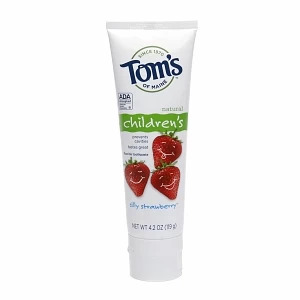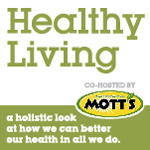
By Elise Jones, blog editor
It never ceases to amaze me when I’m at the store looking to purchase a staple for one of my children what I discover when I look a bit closer at these items. This week (because strep throat has descended upon my house like the plague) I’ve had to purchase and then repurchase toothpaste for my little ones.
 I tend to not buy the neon pink, sparkly toothpastes for my kiddos because it just gets licked off the toothbrush versus actually used for cleaning their teeth. Plus it looks pretty unnatural and that’s usually a tell-tell sign that sends up my healthy-mom flag. I will be honest though, it has made it’s way into my home via travel purchases and the dad taking the girls to the grocery store.
I tend to not buy the neon pink, sparkly toothpastes for my kiddos because it just gets licked off the toothbrush versus actually used for cleaning their teeth. Plus it looks pretty unnatural and that’s usually a tell-tell sign that sends up my healthy-mom flag. I will be honest though, it has made it’s way into my home via travel purchases and the dad taking the girls to the grocery store.
Today, it ended up in my basket and I started to look at the ingredients for the Crest Dora the Explorer toothpaste versus the Tom’s of Maine Children’s toothpaste. One of the main things I look for in the toothpaste is if it is ADA approved. But beyond that, there were quite a few differences in these ingredients. So I decided to see what the experts say about what NOT to have in toothpaste.
Here are a few ingredients to stay away from:
- FD&C blue dye No. 2: This commonly used toothpaste dye is one of several on the list of additives to avoid, maintained by the Center for Science in the Public Interest. It’s said to be linked to learning, behavioral and health problems, severe allergic reactions, and headaches, among other problems.
- Sodium lauryl sulfate: The American College of Toxicology reports this ingredient in cosmetics and industrial cleaning agents can cause skin corrosion and irritation. Doses of .8 to 110 grams/kilogram in lab rats caused depression, labored breathing, diarrhea and death in 4 out of 20 animals.
- Triclosan: An anti-microbial ingredient, the federal Environmental Protection Agency lists triclosan as a pesticide and regulates its use in over-the-counter toothpastes and hand soaps. According to the agency’s fact sheet, “Studies on the thyroid and estrogen effects led EPA to determine that more research on the potential health consequences of endocrine effects of triclosan is warranted. … Because of the amount of research being planned and currently in progress, it will undertake another comprehensive review of triclosan beginning in 2013.”
- Saccharin and aspartame: Both of these artificial sweeteners are on the Center for Science in the Public Interest’s list of additives to avoid. source
 What you SHOULD look for:
What you SHOULD look for:
- natural ingredients, such as aloe vera juice, which cleans and soothes teeth and gums and helps fight cavities
So next time you find yourself in the pharmacy section, check out your favorite toothpastes and make sure these ingredients don’t make it into your basket.
Have any suggestions or questions for our Green Parenting blog? Email [email protected].
__________________________________________________
Like what you see? Here are some more Green Parenting columns:
- Eat Only What You Can Pronounce
- Non-Toxic Home Cleaning Ideas
- New Year; New (chemical) Rug
- Poisonous Apple & Grape Juice
___________________________________________________




Comments are closed.